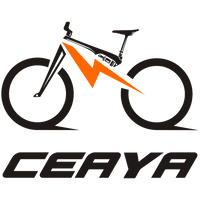In recent years, electric bicycles, commonly known as e-bikes, have surged in popularity. These innovative vehicles offer an eco-friendly alternative to traditional transportation methods, making them a favored choice for commuters and leisure riders alike. In this article, we will explore what e-bikes are, along with the distinctions between pedelecs, s-pedelecs, and class-3 e-bikes.
What is an E-Bike?
An e-bike is a bicycle equipped with an electric motor that assists with pedaling. The presence of a battery-powered motor helps to ease the effort required by the rider, making cycling accessible to a broader audience, including those who may find traditional cycling challenging due to age or fitness level. Most e-bikes come with various levels of assistance, allowing riders to choose how much help they want from the motor.
Pedelecs: The Standard E-Bike
Pedelecs, short for "pedal electric cycles," represent the most common type of e-bike. These bikes provide assistance only while the rider is pedaling. The motor cuts off once the cyclist reaches a speed of 15.5 mph (25 km/h), adhering to many regions' regulations around electric bike usage. This design encourages physical activity and ensures that riders remain engaged in the cycling experience. Pedelecs are ideal for commuters looking to reduce sweat while arriving at work, making them a practical choice for everyday use.
S-Pedelecs: Speedy Assistance
S-pedelecs, or “speed pedelecs,” are a more powerful category of e-bikes. These models are designed to provide assistance up to speeds of 28 mph (45 km/h). Unlike standard pedelecs, s-pedelecs may require registration and insurance, depending on local laws. They are often equipped with more robust components to handle the increased speed and can be a great option for those seeking a faster commute. However, their classification in some areas as mopeds means that they might not be permitted on certain bike paths.
Class-3 E-Bikes: A Defined Category
Class-3 e-bikes fall under a specific classification that includes any e-bike that offers pedal assist up to 28 mph (45 km/h) and comes equipped with a speedometer. These bikes are similar to s-pedelecs but are recognized in various jurisdictions with distinct operational rules. For instance, class-3 e-bikes typically require riders to wear helmets and may be subject to different regulations regarding where they can be ridden. They combine the features of pedelecs and s-pedelecs, offering users a versatile option for both commuting and recreational riding.
Conclusion
E-bikes, encompassing pedelecs, s-pedelecs, and class-3 e-bikes, represent a dynamic shift in personal transportation. By providing varying levels of assistance and speed capabilities, these electric bicycles cater to diverse needs and preferences. Whether you are commuting to work or enjoying a leisurely ride, understanding these distinctions is crucial as you navigate the growing world of e-bikes. Embrace the future of cycling with an e-bike that suits your lifestyle!


